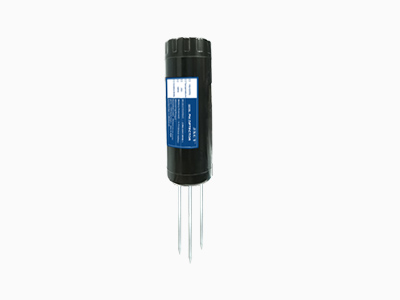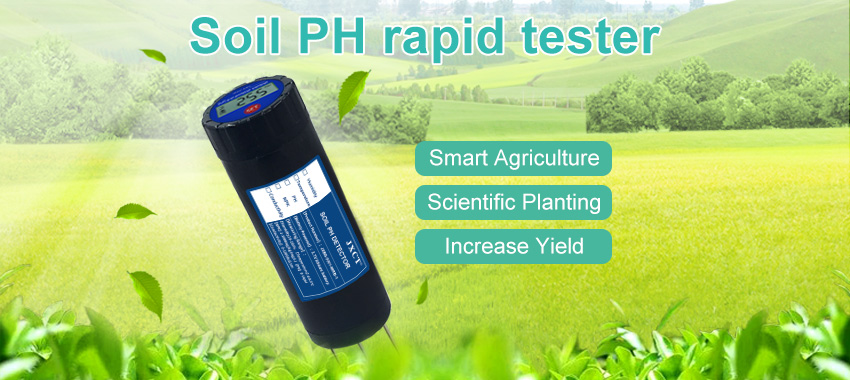Precision agriculture has revolutionized modern farming practices by leveraging technology to optimize crop production while minimizing input costs and environmental impact. At the heart of precision agriculture lies the use of various sensors, including soil sensors, to gather real-time data and insights for more informed decision-making. Soil sensors play a crucial role in monitoring soil conditions, guiding irrigation strategies, optimizing fertilizer applications, and enhancing overall crop health. This comprehensive article explores the significance of soil sensors in precision agriculture, their types, functionalities, applications, benefits, challenges, and future trends.

Definition and Objectives:
Precision agriculture, also known as precision farming or smart farming, involves the use of technology to tailor agricultural practices based on site-specific data. The primary objectives of precision agriculture include maximizing crop yields, minimizing resource wastage, improving sustainability, and enhancing farm profitability.
Key Components of Precision Agriculture:
Precision agriculture encompasses various technologies and tools, such as global positioning systems (GPS), unmanned aerial vehicles (UAVs), drones, satellite imagery, crop sensors, weather stations, and soil sensors. These components work together to collect data, analyze trends, and facilitate precision decision-making in farm management.
II. Role of Soil Sensors in Precision Agriculture:
Monitoring Soil Parameters: Soil sensors are designed to measure key soil parameters, including moisture content, temperature, salinity, pH levels, nutrient levels, compaction, and organic matter content. By continuously monitoring these variables, farmers gain valuable insights into soil health and condition, enabling them to make data-driven decisions.
Guiding Irrigation Management:
One of the primary roles of soil sensors is to inform irrigation management practices. By accurately assessing soil moisture levels at different depths, soil sensors help farmers schedule irrigation activities more efficiently, avoiding overwatering or underwatering, which can lead to water wastage or crop stress.
Optimizing Fertilizer Applications:
Soil sensors play a vital role in optimizing fertilizer applications by providing real-time information on soil nutrient levels. With this data, farmers can adjust their fertilizer dosages based on the actual nutrient requirements of the crops, leading to improved nutrient uptake, reduced environmental impact, and cost savings.
Enhancing Crop Health and Yield:
By monitoring soil conditions closely, soil sensors contribute to enhancing crop health and overall yield. Maintaining optimal soil moisture, nutrient levels, and pH balance promotes healthy root development, reduces plant stress, and boosts productivity, ultimately resulting in higher-quality crops.
III. Types of Soil Sensors:
Soil Moisture Sensors: Soil moisture sensors measure the water content in the soil, indicating whether the soil is too dry or too wet for optimal plant growth. These sensors come in various forms, including capacitance sensors, tensiometers, and time domain reflectometry (TDR) sensors.
Soil Temperature Sensors:
Soil temperature sensors gauge the temperature of the soil at different depths. Temperature impacts seed germination, microbial activity, nutrient availability, and plant growth stages, making it a critical parameter for agricultural management.
Soil Nutrient Sensors:
Soil nutrient sensors detect the levels of essential nutrients in the soil, such as nitrogen, phosphorus, potassium, and micronutrients. This information helps farmers customize their fertilization practices to meet the specific nutrient requirements of crops.
Soil pH Sensors:
Soil pH sensors measure the acidity or alkalinity of the soil, influencing nutrient availability, microbial activity, and plant nutrient uptake. Maintaining the appropriate soil pH range is essential for optimal crop growth and yield.
Drip Irrigation Systems:
Soil sensors are integrated into drip irrigation systems to regulate water delivery based on real-time soil moisture readings. This precision irrigation approach ensures that crops receive the right amount of water at the right time, promoting water efficiency and minimizing water runoff.
Variable Rate Fertilization:
Soil sensors enable variable rate fertilization, where fertilizer applications are adjusted based on the nutrient levels detected in different soil zones. This targeted approach optimizes nutrient utilization by matching fertilizer inputs with crop requirements, reducing excess application and nutrient leaching.
Soil Mapping and Analysis:
Soil sensors contribute to soil mapping and analysis, helping farmers identify soil variability across their fields. By generating soil maps that highlight differences in moisture, nutrients, and other parameters, farmers can implement site-specific management practices for improved crop performance.
Crop Health Monitoring:
Soil sensors play a role in monitoring crop health by assessing soil conditions that directly impact plant growth. Early detection of soil moisture stress, nutrient deficiencies, or pH imbalances allows farmers to intervene promptly, apply corrective measures, and maintain optimal crop health throughout the growing season.
V. Benefits of Using Soil Sensors in Precision Agriculture:
Increased Efficiency: Soil sensors enhance operational efficiency by providing real-time data on soil conditions, enabling farmers to make timely decisions regarding irrigation, fertilization, and crop management practices.
Resource Optimization:
By precisely monitoring soil parameters, soil sensors help optimize resource usage, such as water, fertilizers, and energy. This leads to reduced input costs, improved resource efficiency, and sustainable agricultural practices.
Improved Crop Quality:
Optimal soil management facilitated by soil sensors results in improved crop quality, higher yields, and better resistance to environmental stresses. Healthy soils foster robust root systems, nutrient-rich plants, and superior crop performance.
Environmental Sustainability:
Precision agriculture driven by soil sensors promotes environmental sustainability by minimizing chemical runoff, reducing water wastage, and mitigating the ecological impact of agriculture. Targeted inputs and precise management practices contribute to a more eco-friendly farming approach.
Data Interpretation and Integration:
One of the challenges in utilizing soil sensors is effectively interpreting the vast amount of data generated and integrating it with other farm management systems. Enhancements in data analytics, visualization tools, and interoperability will be key for maximizing the value of soil sensor data.

Sensor Accuracy and Reliability:
Ensuring the accuracy and reliability of soil sensor measurements is crucial for informed decision-making. Ongoing advancements in sensor technology, calibration methods, and quality control processes aim to enhance sensor performance and data precision.
Adoption and Education:
Promoting the adoption of soil sensors among farmers and providing adequate training and support are essential for widespread implementation. Increasing awareness of the benefits of precision agriculture and offering user-friendly sensor solutions can drive greater acceptance and usage.
Integration with Autonomous Systems:
The integration of soil sensors with autonomous farming systems, robotics, and artificial intelligence holds promise for further enhancing precision agriculture practices. Automated data collection, analysis, and decision-making processes enabled by advanced technologies will shape the future of smart farming.
Conclusion:
Soil sensors are indispensable tools in the realm of precision agriculture, empowering farmers to make informed decisions, optimize resource management, and enhance crop productivity sustainably. By leveraging soil sensor data to monitor soil health, guide irrigation and fertilization practices, and improve overall crop performance, farmers can achieve greater efficiency, profitability, and environmental stewardship in their agricultural operations. As soil sensor technology continues to evolve and integrate with advanced farming systems, the future of precision agriculture holds exciting possibilities for transforming the way we cultivate the land and feed the world.